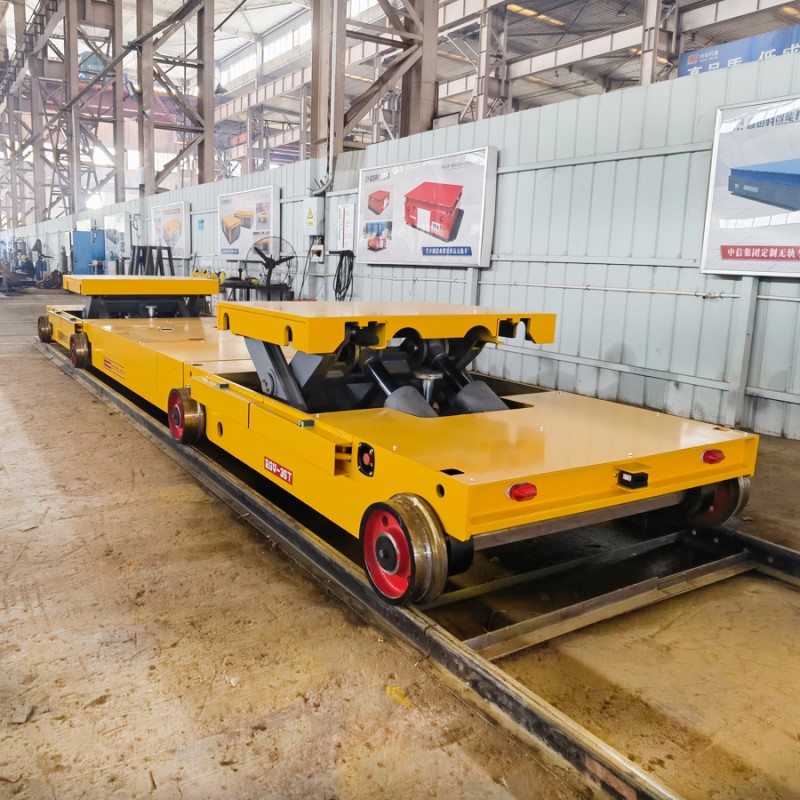
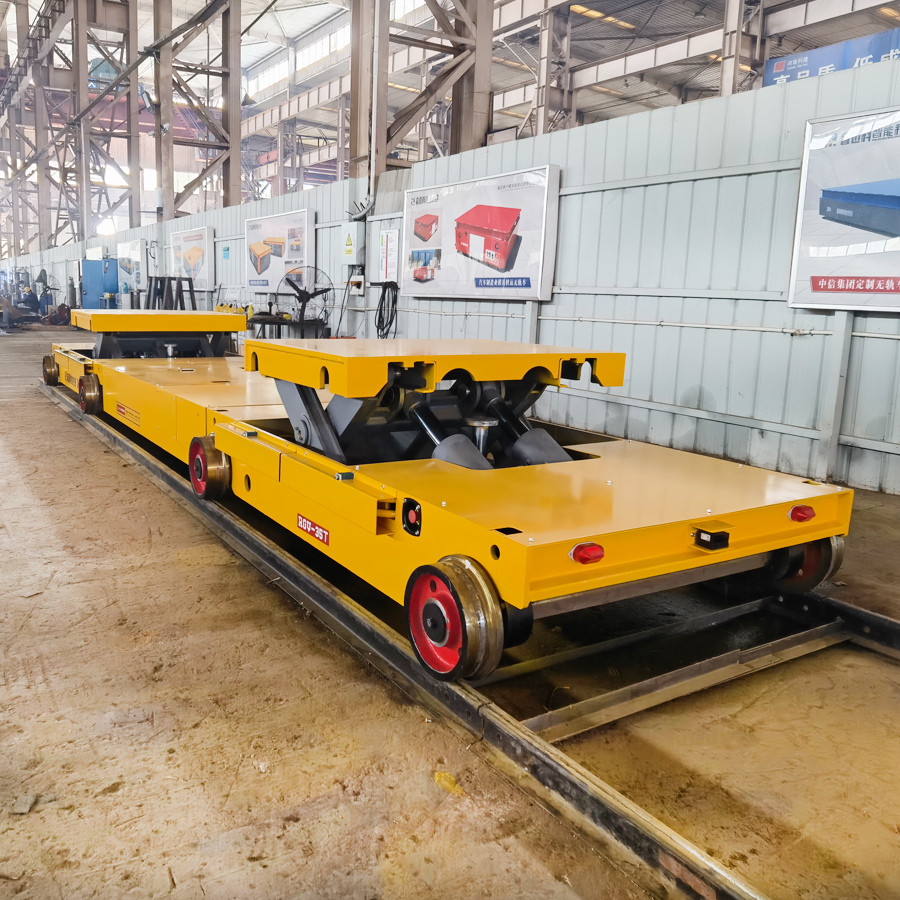
Automated electric rail transfer vehicles can be used for automated distribution projects in workshop production logistics, achieving fully automatic distribution of materials required for production lines. RGV series automatic rail transfer vehicles designed and produced by REMARKABLE are safe, stable, reliable, economical, progressiveness and forward-looking to meet the development needs of factory production automation while meeting the production needs.
RGV transport vehicle is an automated material transfer vehicle used for the transportation of aluminum coils, steel coils, wire rods, or other materials in the production workshop. It is a track type transport vehicle that can move on longitudinal and transverse tracks, and is coordinated with on-site networks and scheduling systems to achieve automatic loading and unloading of materials on production equipment.
The RGV transport vehicle is a fully automated transfer equipment that can achieve rapid material transfer during use, greatly improving production efficiency and increasing the automation level of the factory.
REMARKABLE customizes a complete set of systematic handling solutions, including functions such as RGV handling vehicles, automatic charging stations, and scheduling systems. This includes a complete set of services including scheme planning, design, manufacturing, installation and debugging, training, and technical services for all RGV transport vehicle systems.
Advantages:
Optimize production logistics methods, maximize space savings, and meet the transportation needs of various types of materials between different material locations;
Safety: Install necessary safety barriers, protective covers, and other safety protections to ensure personnel safety; Design emergency plans to ensure production can proceed in case of emergency;
Reliability: Select mature logistics automation equipment to ensure reliable and smooth system operation;
Progressiveness: innovative design concept, optimization of all process links, deep intelligence, high automation, leading in the industry;
Economy: Clear logistics routes, reasonable allocation of flow, elimination of bottleneck effects, improvement of system efficiency, and reasonable reduction of investment;
Openness: achieving open sharing of information technology functions, supporting deep integration of data interfaces and types with existing information platforms;
Expandability: It can achieve functional expansion of equipment, and through later professional transformation, it can be functionally matched with interface equipment. It can continuously enrich and increase the types and quantities of scheduled vehicles, in order to facilitate the gradual implementation of intelligence.
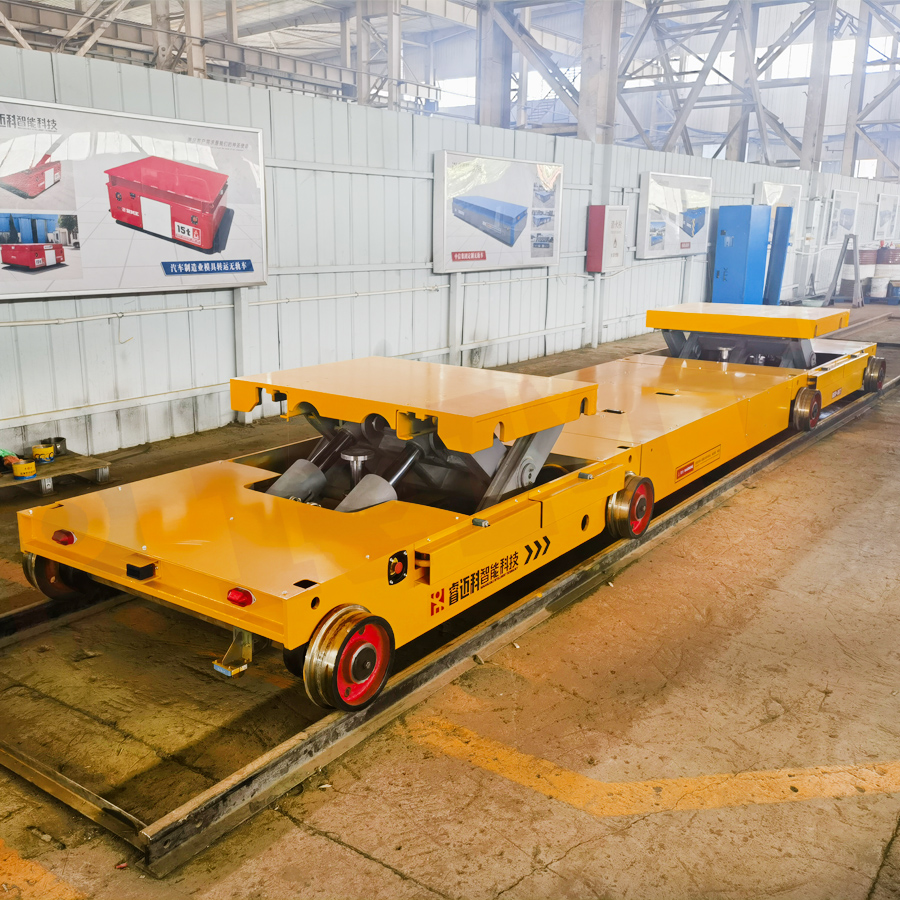




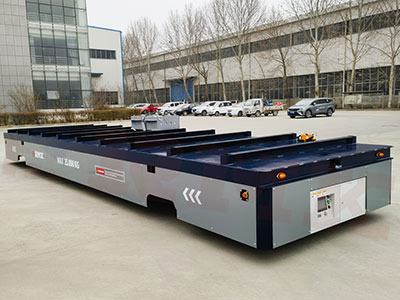 Intelligent trackless transfer cart
Intelligent trackless transfer cart
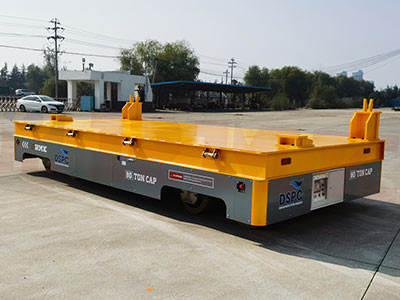 Trackless transfer cart applied in the water conservancy industry
Trackless transfer cart applied in the water conservancy industry
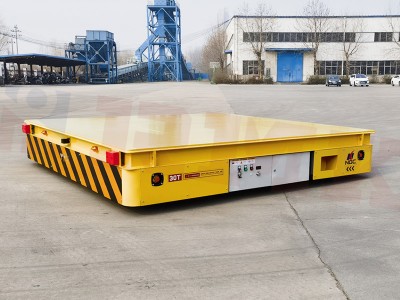 Motor factory handling cart 30 tons battery transfer cart
Motor factory handling cart 30 tons battery transfer cart
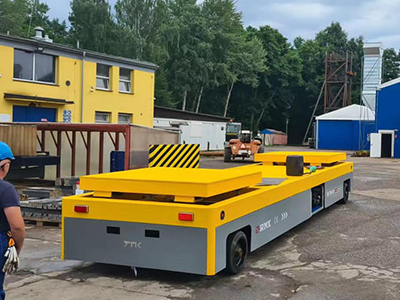 Industrial 30 tons hydraulic lifting heavy-duty trackless transfer cart
Industrial 30 tons hydraulic lifting heavy-duty trackless transfer cart
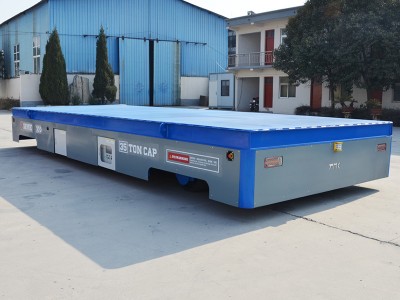 Customized trackless transfer cart
Customized trackless transfer cart
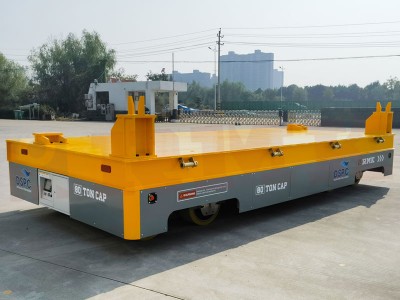 80 tons hydraulic steering trackless trolley
80 tons hydraulic steering trackless trolley
 Intelligent trackless transfer cart
Intelligent trackless transfer cart
 Trackless transfer cart applied in the water conservancy industry
Trackless transfer cart applied in the water conservancy industry
 Motor factory handling cart 30 tons battery transfer cart
Motor factory handling cart 30 tons battery transfer cart
 Industrial 30 tons hydraulic lifting heavy-duty trackless transfer cart
Industrial 30 tons hydraulic lifting heavy-duty trackless transfer cart
 Customized trackless transfer cart
Customized trackless transfer cart
 80 tons hydraulic steering trackless trolley
80 tons hydraulic steering trackless trolley
At the very beginning of formulating a solution, our engineers will predict the faults that might occur during the equipment utilization relying on their rich experience, and avoid quality risks in advance.
Before getting inside the warehouse, all steel plates must be pretreated and testified to be qualified.
There is quality inspection in every process. The previous process can be allowed to enter the next one only if it is qualified. The whole process inspection records must be well preserved.
Before delivery, all the transfer carts/trolleys must undergo performance test, including load forward and backward, obstacle avoidance, omnidirectional mobile, slope climbing, lifting, wireless remote control, etc.